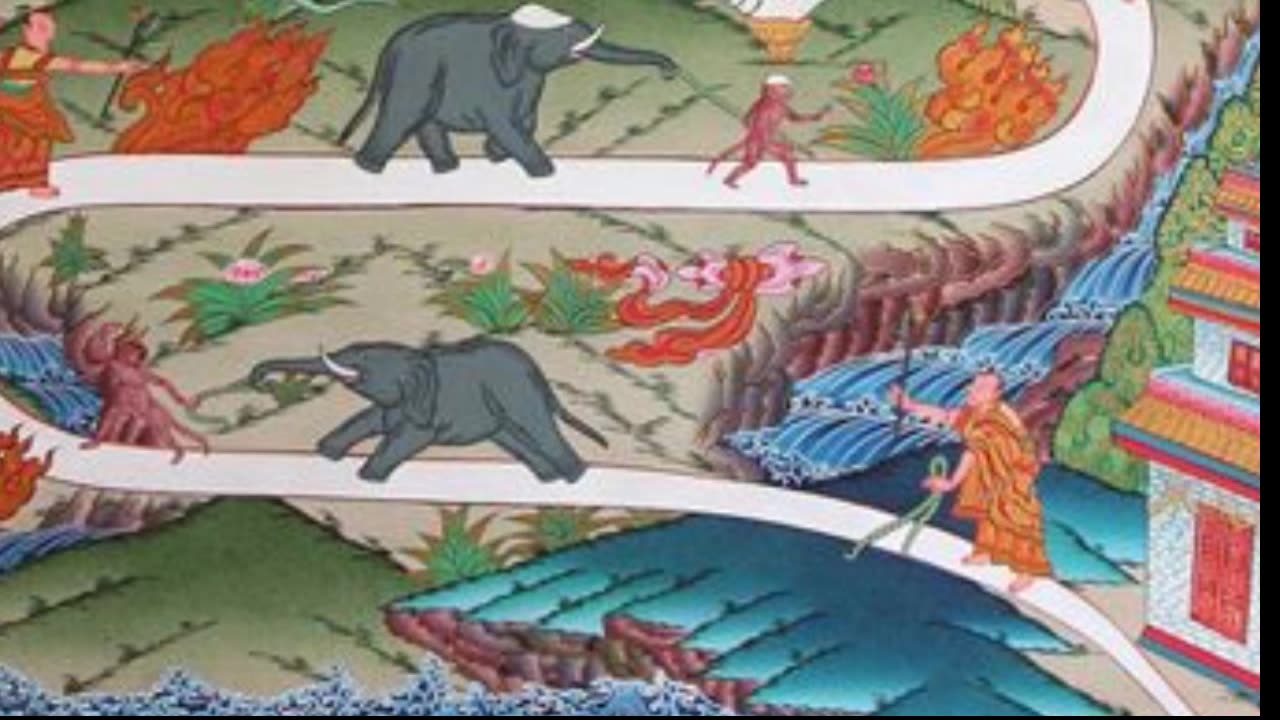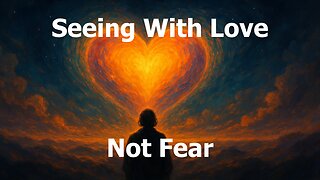Premium Only Content

Meditation Essentials: Recognizing Obstacles
Today we are going to talk about specific obstacles that the beginner faces in meditation practice. There are many obstacles to meditation, and in the previous lectures we pointed out some of the most fundamental ones:
Not knowing what the consciousness is, and not knowing how to work with it. We all have ideas about consciousness, but we need to know experientially in the moment what it is and how to use it. That is why gave this lecture: Meditation Essentials 02: Consciousness
Lack of energy. Usually, we do not have energy, because we have wasted energy, we have squandered it; we have invested it into harmful action. We need to learn how to save, accumulate, and transform energy in order to nourish our consciousness daily. That is why gave this lecture: Meditation Essentials 03: Energy
Committing actions that impede meditation. We tend to act in ways that contradict our spiritual goals. We need to set up the prerequisites for good practice; we need good ethics; we need to know how actions lead to consequences that if we behave in certain ways, certain consequences always result, and our ignorance of that is a big obstacle for us. That is why gave this lecture: Meditation Essentials 04: Action and Consequence
In today's lecture we are going beyond those preliminary obstacles. Now we are going to talk about obstacles the arise when we are practicing: either doing our preliminary exercises or in the actual practice of meditation.
We previously explained that the state of meditation is a precise state of consciousness that we access when we learn how to harness concentration and imagination at the same time, together. To do that requires training, so most beginners start with developing concentration first.
Preliminary Training of Concentration
In the first six lectures of this course we have encouraged you to practice daily:
Self-observation
Concentration
Self-observation is mindfulness of one's actions. It means to always be aware of yourself, to be present, to be in the moment, to be aware of your body, to be aware of your heart, to be aware of your mind, and to be cognizant of what you are doing at all times. That is the first exercise and that exercise establishes the very beginning of meditation. If you are not doing that, you will never learn to meditate.
The second exercise is to develop your concentration daily by doing preliminary concentration practices. An easy practice for this is the observation of the sensations of the breath. If you have been following this course you would have been doing these exercises now for twelve or fourteen weeks.
Now we are going to go into a new phase of work, where we are going to leave behind the preliminary exercises and go into something that is perhaps more difficult but also incredibly important: visualization.
Deeper Training of Concentration
Serenity is a result of how you put your consciousness and energy into action. That is all that determines your progress through the stages of concentration. This means that if you are not experiencing a change in your concentration, it is simply because you are not yet producing the cause that creates the result you want.
The Defining Characteristics of Concentration
In this tradition we learn that concentration as a state of consciousness has two important features that we need to be able to identify in our practical experience, specifically in meditation practice. Those two distinguishing features are:
Vivid intensity, intense mental clarity
Stability, one-pointedness
Stability, one-pointedness, is the ability to remain focused on something without wavering.
Vivid intensity is visual, imagery, that is something perceived; it is not imaginary, this is not just metaphorical. This means that real concentration is a form of visual perception. Thus, to develop real concentration, one must use visual imagery. This underscores the fact that most practices that people call "meditation" are actually just preliminary training exercises for relaxation or the very beginning of concentration. Real concentration utilizes the full power of the consciousness, whose very nature and function is the perception of imagery.
The words "clarity" and "vivid" indicate the ability to perceive something without any obscurity. If I ask you to remember what you had for breakfast, an image pops up in your memory and you can perceive that, even it is only for an instant. How clear is that image? How vivid is it? Can you sustain it without being distracted? The qualities of that recollection are a reflection of your concentration ability. If that image is dim, fleeting, and hard to perceive, then you have work to do.
-
 9:32
9:32
MagnumOpus333
5 days agoSeeing With Love, Not Fear
45 -
 LIVE
LIVE
Steven Crowder
2 hours agoWho is the Real Myron Gaines | Ash Wednesday
42,058 watching -
 LIVE
LIVE
The Rubin Report
52 minutes agoCharlie Kirk’s Warning for MAGA if Mamdani Won
2,356 watching -
 1:00:32
1:00:32
VINCE
2 hours agoNYC Has Been Seized By The Communists | Episode 162 - 11/05/25
60.5K126 -
 1:33:32
1:33:32
Graham Allen
3 hours agoTold You The War Was FAR From Over… The Blue Wave Just Proved It! Evil Is Fighting Back!
78.4K84 -
 LIVE
LIVE
Badlands Media
9 hours agoBadlands Daily: November 5, 2025
4,069 watching -
 LIVE
LIVE
Wendy Bell Radio
6 hours agoLike Sheep To Slaughter
7,451 watching -
 1:13:30
1:13:30
DML
2 hours agoDML LIVE: NYC Goes Socialist: Mamdani’s Victory
18.9K9 -
 1:04:43
1:04:43
Chad Prather
15 hours agoTruth on Trial: When Fear Meets Faith
58.8K35 -
 LIVE
LIVE
LFA TV
14 hours agoLIVE & BREAKING NEWS! | WEDNESDAY 11/5/25
4,063 watching